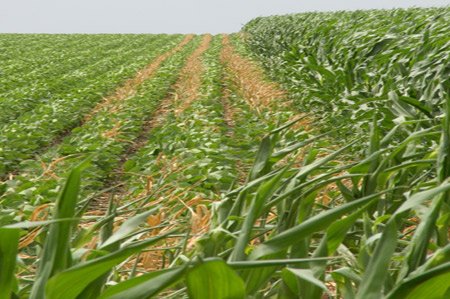 (Farm and Ranch Guide) – Many corn and soybean fields in central, west central and southwest Minnesota were affected by frost early on Sept. 13. As is always the case, the frost damage appears to be highly variable based on local climate conditions, crop maturity and topographical features.
(Farm and Ranch Guide) – Many corn and soybean fields in central, west central and southwest Minnesota were affected by frost early on Sept. 13. As is always the case, the frost damage appears to be highly variable based on local climate conditions, crop maturity and topographical features.
For corn, a killing freeze occurs when temperatures are 32 F for four hours or 28 F for minutes. A frost or killing freeze can still occur when temperatures are above 32 F, especially in low and unprotected areas when there is no wind. For soybeans, most reports indicated the crop was unaffected, nipped slightly at the tops, or (in rare cases) frozen down into the canopy.
Symptoms of frost damage/severity
Corn
Corn leaves are more easily damaged by frost than stalks. In addition, leaves above the ears are more susceptible to injury than leaves below the ear. Leaves damaged by frost initially have a water-soaked appearance, after drying are light green to gray, and later turn brown. It is recommended to wait a few days before scouting fields to assess the impact of frost.
If the frost is not severe enough to cause premature formation of the kernel black layer, the kernels will continue to accumulate dry matter through translocation of sugars from the stalk and remaining green leaf area.
Soybean
The damage frost can cause, apart from climatic and topographic variation, is greatly affected by soybean management and growth conditions. Dense and lush soybean canopies tend to fend off severe freezes by holding heat within the canopy, whereas open canopies tend to allow the cold air access to the lower canopy.
Late planting, soybean cyst nematode, iron deficiency chlorosis, and some conventional herbicides tended to promote open canopies in many areas this year. These fields were likely damaged more by the frost than less-stressed fields.
Likewise, soybeans nearing maturity tend to see deeper frost damage due to dropped leaves and open canopies. However, injury in the form of reduced yields is greatly reduced if frost occurs as soybeans near the R7 growth stage (one mature, colored pod on the main stem).




